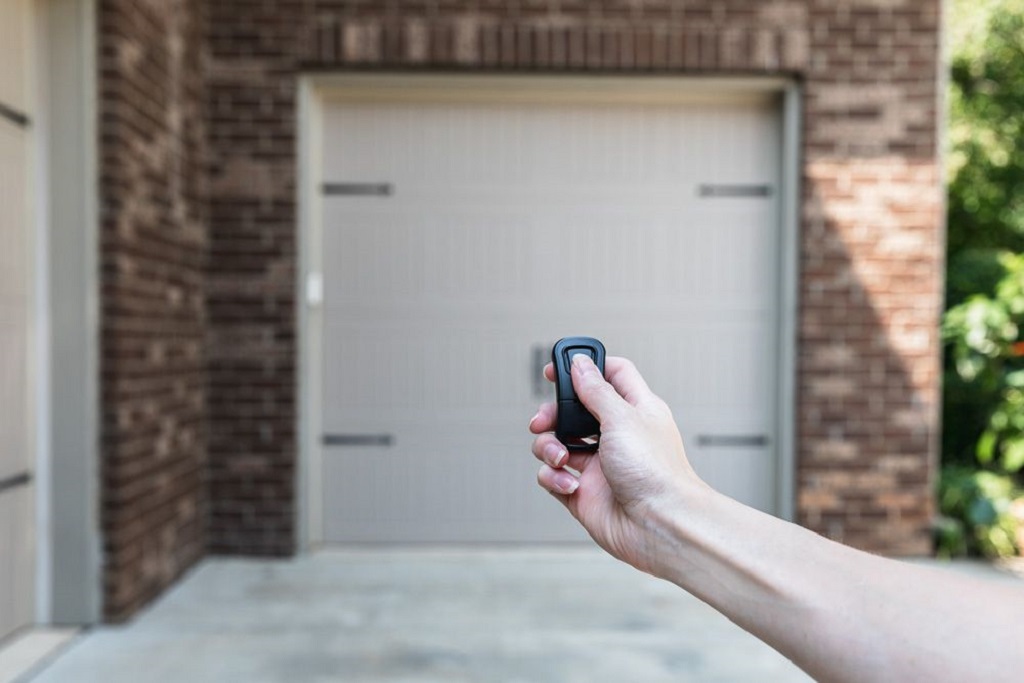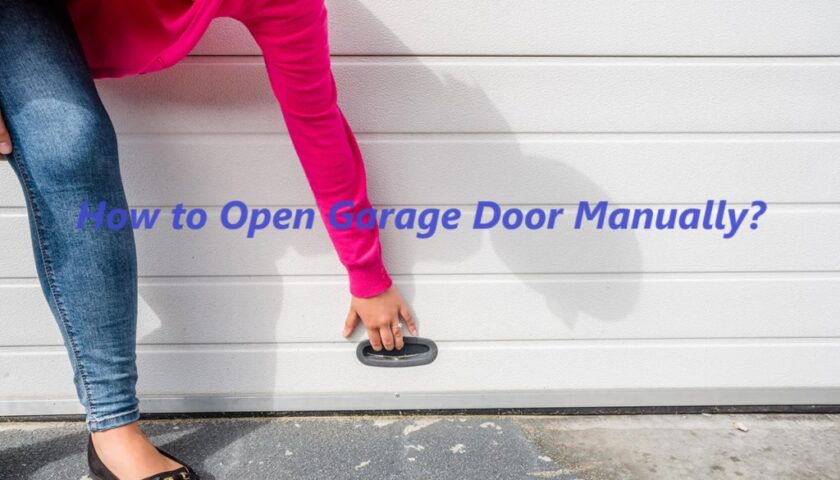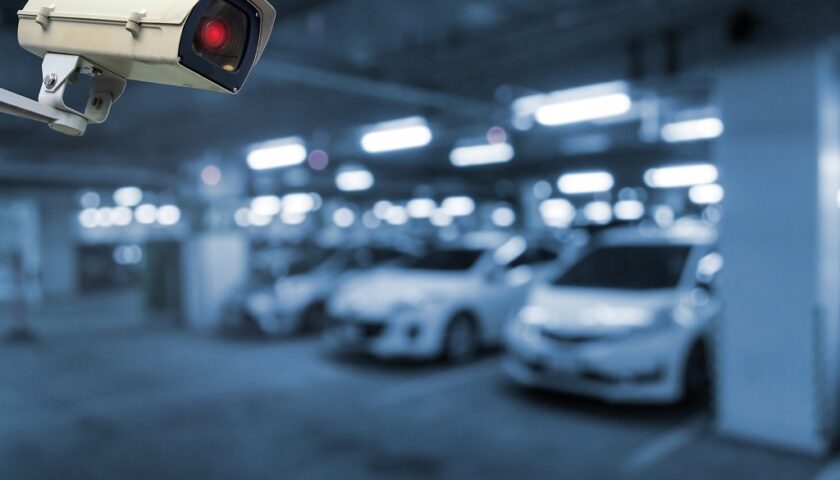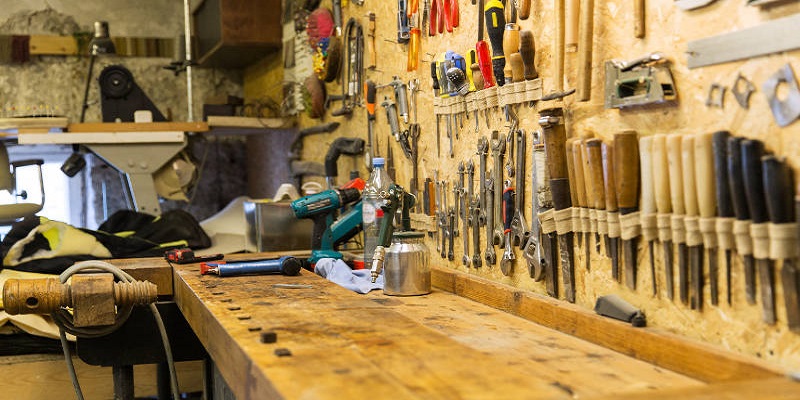A garage door opener is one of those things we often take for granted – until it stops working correctly. Coming home and finding your garage door opener won’t open or close the door can be incredibly frustrating. However, there are usually some quick and easy fixes you can try before calling in a professional garage door repair service. In this comprehensive guide, I’ll walk you through the top troubleshooting tips for garage door opener not working.
Identify the Problem
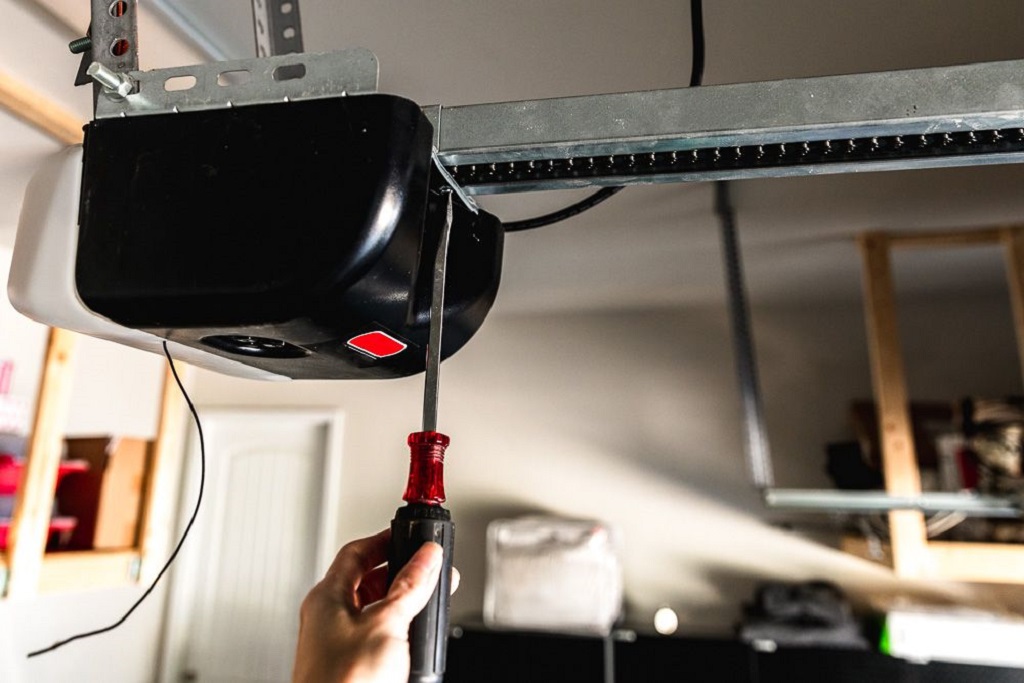
The first step in fixing your garage door opener is to identify the problem. Here are some of the most common issues that can occur:
The Opener Won’t Open or Close the Door
If the garage door opener doesn’t open or close, there are a few likely culprits. Start by checking if the opener is getting power. Look for a light on the motor unit that should come on when you push the remote or wall button. If there’s no light, check the power outlet, fuse box, and any safety sensors.
Next, check the remote batteries and program settings. Low batteries or a mismatch in remote codes can prevent communication. Reprogram the remote and replace batteries if needed.
The Door Opens But Doesn’t Close
If the garage door opens but doesn’t close, check the safety sensor alignment. The sensors project invisible beams across the door opening, and if anything is blocking the path, the door won’t close as a safety precaution. Carefully realign the sensors if they’ve gotten bumped out of position.
You’ll also want to inspect the door and track for obstructions. The buildup of debris or damage can interfere and cause the door to get stuck halfway. Clean and lubricate the track and ensure it’s straight.
The Door Reverses When Closing
It can be scary when the garage door starts to close but then immediately reverses and goes back up. This is another safety feature to prevent the door from closing on something.
Start by rechecking the safety sensors. Any misalignment or obstruction can trigger this response. Then, check for objects like bikes or tools blocking the path. Finally, test the auto-reverse mechanism manually. Grab the door as it’s closing, and it should retract. If not, adjustment is needed.
The Opener Strains and Noisy
If you notice the garage door opener motor working harder than usual, making grinding noises, or screeching, there could be an issue with the door itself.
Inspect the door rollers, hinges, and tracks. Lubricate any stiff or squeaky parts. The tracks may need realignment if dented or sagging on one side. Then, run the door manually to check for areas of rubbing or resistance.
Check the Basics First
Before diving into more complex troubleshooting, there are a few basic steps you can take to get your garage door opener up and running again:
- Check the power source – Make sure the opener is getting power by looking for an indicator light. Check outlets, breakers, and fuses.
- Inspect the remote – Low batteries? Try replacing them. Still not working? Attempt reprogramming the remote.
- Look for debris or obstructions – Clean tracks and remove items blocking the door path or sensors.
- Review safety sensor alignment – Beam should be uninterrupted. Carefully realign if needed.
- Test the door manually – Run the door up and down to check for sticking points or damage.
- Examine the opener – Inspect for loose, worn, or disconnected parts. Tighten screws, replace belts, etc.
- Check for binding rollers or hinges – Lubricate and tighten hardware as necessary.
- Inspect track alignment – Straighten any bent sections. Tighten mounting brackets.
Taking a few minutes to run through these simple steps can often uncover the source of the problem and get things working smoothly again.
When the Opener Has Power But Won’t Run
Frustratingly, the garage door opener sometimes has power but still refuses to operate. If the light is on but nothing happens when you push the remote or wall button, here are a few things to investigate:
- Remote frequency – If you change the remote, the opener may need to reprogram the frequency. Sync them up.
- Wall console – Tap the button gently to see if there’s an issue with the wiring or contacts.
- Safety sensors – Check for any LED lights on the sensors. Flashing means they are misaligned or obstructed.
- Logic board – The circuit board that controls the opener may have a fault. Inspect for damage or burnt smell.
- Drive motor – Power it on manually to test. If dead, it may need professional replacement.
- Capacitor – This part helps start the motor. A failed capacitor could be the culprit.
- Carriage – Check where it connects to the arm. A broken gear or belt could prevent motion.
- Chain/belt – These should move freely without excessive slack. Replace if worn.
Don’t forget to check your owner’s manual as well. Some models have miniature fuses or sensors that can impact operation. With a systematic approach, you can hopefully get things moving again.
Why the Garage Door Stops and Reverses
There you are, watching your garage door descend when suddenly it stops and goes back up again. This can be perplexing if you’re unsure what’s causing it.
Here are the main reasons a garage door will stop and reverse direction while closing:
- Safety sensor obstruction – This is the most common cause. If the safety beams have something blocking their path, the door will automatically reverse to avoid entrapment accidents. Carefully realign the sensors so nothing is interrupting the infrared beams.
- Force setting sensitivity – Garage door openers have a force adjustment setting to determine when the door should reverse if meeting resistance. If set too lightly, standard friction can trip the sensor. Adjust according to the opener manual.
- Track obstructions – Debris or objects in the door’s path can activate the safety mechanism. Inspect the tracks and remove any obstructions.
- Door imbalance – If the door binds or sticks on one side, it can sometimes trip the sensor. Check rollers, lubrication, and tracks.
- Weather conditions – Wind or cold weather can prevent smooth operation and cause a reverse. Ensure the door opens and closes quickly by hand when troubleshooting.
- Opener adjustment – Opener parts can shift from their original adjustment over time. A service technician may be needed to recalibrate components.
Paying attention to what causes the garage door to stop and reverse can help narrow down the underlying problem. Then you’ll know if it’s a quick fix or time to call a pro.
Fixing Garage Door Opener Remote Issues
That tiny remote you use to open your garage door relies on radio signals. Like anything wireless, the signals can sometimes get crossed or interrupted. If your garage door remote starts acting up, here are a few ways to troubleshoot and fix the most common issues:
Replace Remote Batteries
- Weak batteries account for most remote problems.
- Change out batteries regularly every six months to 1 year.
- Use alkaline or lithium batteries for the most extended life.
- Dispose of old batteries properly.
Reprogram Remotes
- If the remote has difficulties communicating with the opener, try reprogramming.
- Follow the reprogramming steps in the owner’s manual.
- You will usually hold a button on the motor unit until it flashes and press the remote button.
- Confirm it works after reprogramming.
Add More Remotes
- Add remotes programmed to the same opener for households with multiple people.
- Follow the same reprogramming process for any new remotes.
- Retire old lost remotes so they can’t open the door later.
Extend Remote Range
- Some remotes have a concise, effective range of use.
- Try replacing it with an extended-range model.
- Or add a wireless range extender for the existing remote.
Check Remote Antenna
- On some models, the remote has an internal antenna that can get damaged over time.
- Carefully pry open the remote and inspect the antenna for issues.
- Replace the whole remote if the antenna looks corroded or severed.
With some basic troubleshooting, you can usually get your garage door remote working smoothly again. But if problems persist, contact a garage door professional for additional help.
How to Diagnose Garage Door Opener Sensor Issues
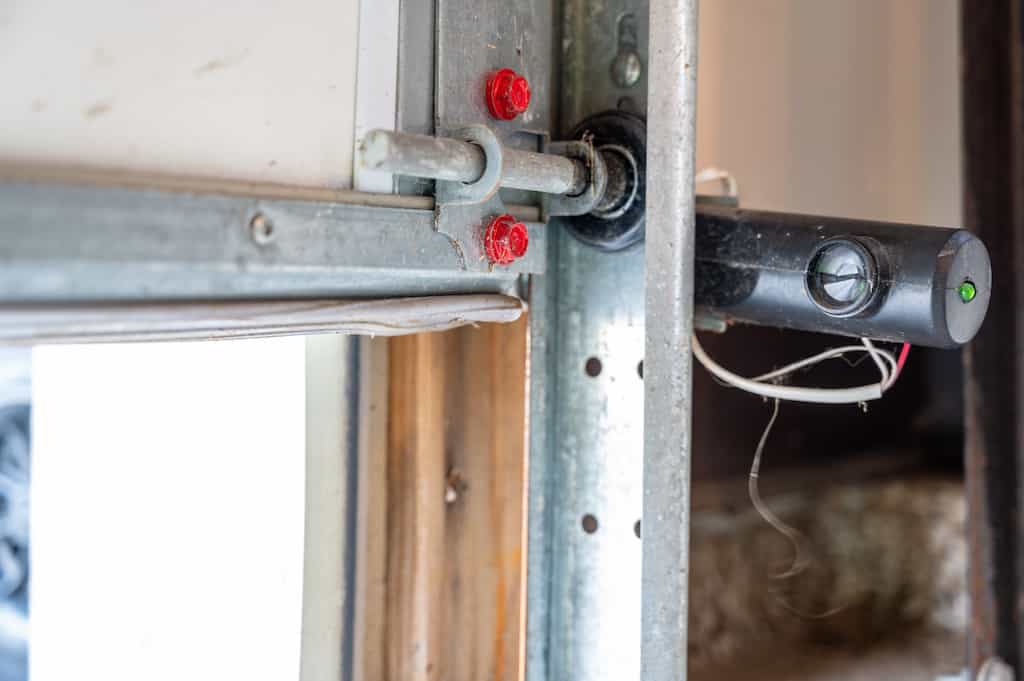
Garage door openers use safety sensors to detect objects in the door’s path. If something is blocking the sensor beams, it will prevent the door from closing to avoid accidents. If you suspect your sensors aren’t working correctly, here’s how to diagnose garage door opener not working:
Check For Power: Each sensor should have indicator lights when active. No lights mean they have no power. Verify wiring from the opener and power source.
Inspect Alignment: The small windows on each sensor should face each other directly with no obstructions. Realign them if needed.
Look For Damage: Cracked lenses, loose wiring, corrosion, etc can cause sensor malfunction. Replace damaged parts.
Test With An Object: Break the beam with an object while the door closes. It should stop and reverse direction. If not, the sensors need adjustment.
Swap Locations: Place the sensors on opposite sides from their current locations. Does the problem follow one sensor or stay in place? This can help identify faulty units.
Check Connections: Ensure plugs are correctly and securely connected to the opener and power source. Loose connections can cause issues.
Replace Batteries: Some sensors have battery packs. Low batteries could be disrupting the signal. Install fresh batteries.
Clean The Lenses: Dust and dirt on the lenses can interfere with the infrared beams. Wipe them with a soft cloth.
With consistent sensor issues, replacement may be needed. Make sure new parts are compatible with your garage door opener model.
Why Your Garage Door Won’t Close All the Way
You hit the button to close your garage door, and it makes it most of the way down before stopping short. This improper closing can be very annoying over time. But don’t worry, the cause is usually one of these common issues:
- Safety sensor obstruction – Misaligned safety sensors or something physically blocking the beams can prevent full closure for safety. Inspect, clean, and realign the sensors.
- Track obstruction – Debris, sticks, toys, or other objects lodged in the track can impede downward travel. Clean the track thoroughly.
- Damaged rollers – Worn, bent, or broken door rollers will start to resist downward force. Replace bad rollers immediately.
- Broken spring – Door springs provide lift assistance. A broken one creates an imbalance and can inhibit closing. Have a pro replace broken springs.
- Limit settings – If a limit setting is off, it will tell the opener to stop before fully closing. Have an installer adjust the limits.
- Sagging tracks – Tracks that droop or slope can allow the rollers to move out of alignment. Straighten or remount tracks.
- Force adjustment – avegeNormal friction resistance will trigger auto-reverse if set too lightly. Increase force setting gradually.
Pinpointing what’s preventing the door from fully closing can be done with a quick visual inspection and process of elimination. Address the culprit, and your door should close normally again.
Troubleshooting Automatic Garage Door Openers
Automatic garage door openers offer lovely convenience. When they stop working correctly, it’s incredibly frustrating. Here is a systematic approach to troubleshooting common mechanical opener issues:
- Define the problem. What exactly is the door doing or not doing? When does the problem occur?
- Review power source – Is the opener getting power? Check outlet, breakers, fuse, and battery backup if applicable.
- Inspect the door – Test manually for sticking, binding, obstructions, track alignment, damaged rollers, and broken springs.
- Examine the opener – Check for loose hardware and worn or broken parts like belts and gears. Tighten and replace as needed.
- Check remotes and wall consoles – Replace batteries, reprogram frequency, and test wiring and connections.
- Inspect safety sensors – Realign if needed. Clean lenses and connections. Test that they reverse the door.
- Review settings – Force, limit adjustments, and sensitivity may need tweaking.
- Test motor – Bypass the logic board to power the motor directly. If it doesn’t run, the motor needs replacement.
- Consult the manual – Look for model-specific troubleshooting tips. Follow all safety precautions.
- Call a technician – If you’ve tried everything with no luck, get professional garage door opener help.
With time and patience, many issues can be resolved with basic troubleshooting. But for lingering or complex problems, expert repair services may be required.
DIY Garage Door Opener Maintenance
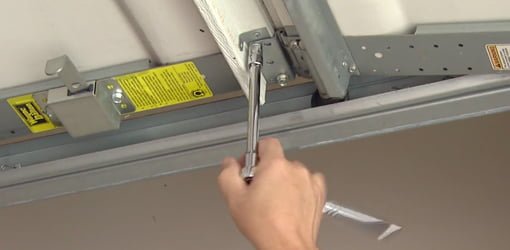
Don’t neglect periodic maintenance to keep your garage door opener running smoothly for years to come. Here are six tasks you can easily DIY:
- Inspect the Door – Check for damage, wear, and alignment. Address rollers, hinges, springs, and track issues.
- Clean the Tracks – Vacuum dust and debris. Wipe with a damp cloth. Apply lubricant to the tracks.
- Adjust Hardware – Tighten any loose screws, nuts, and bolts. Replace broken parts like belts or gears if needed.
- Lubricate Moving Parts – Add a few drops of garage door lubricant anywhere rollers and hinges move.
- Test Balance – Manually move the door to ensure it opens and closes smoothly with no binding or imbalance issues.
- Inspect Sensors – Clean lenses and realign if needed. Replace dead batteries. Confirm they reverse the door when obstructed.
Following the manufacturer’s maintenance schedule can maximize lifespan. It is also wise to perform safety checks and testing periodically. Or call in a pro for tune-ups and repairs as needed. Consistent care ensures smooth running garage access for years on end.
Why Does My Garage Door Reverse When It Almost Closes?
You hit the button to close your garage door, which typically lowers. But when there’s just a foot or two left before being fully shut, it suddenly stops and reverses direction back open again. What gives?
There are a few possible culprits for this frustrating issue:
- Safety sensor obstruction – Any debris or object interrupting the sensor beams will cause reverse. Inspect and realign the sensors.
- Force setting too light – Standard friction can trigger the safety reverse if set too lightly. Gradually turn the force up.
- Weather conditions – Wind or cold weather can impede operation and cause reverse. Try closing manually instead.
- Off-balance door – If binding on one side, it may wrongly trigger the safety mechanism. Check rollers and lubricate.
- Misaligned tracks – Crooked tracks can cause the rollers to slip and cause reverse. Straighten and tighten tracks.
- Worn extension springs – Door springs act as a counterbalance. Weak springs make closing more difficult. Have a pro replace.
- Bent track – Damaged vertical tracks throw the rollers out of whack and lead to reverse. Inspect tracks thoroughly.
By elimination, you can usually determine what makes your door revert open right before fully closing. Address the underlying issue, and it should close normally again.
How to Program a New Garage Door Opener Remote
So you’ve lost the original remote for your garage door opener or want an additional one programmed. Here is a step-by-step guide to programming a new remote:
- Locate the Learn Button – Consult the owner’s manual to find the “learn” or “program” button on the motor unit. It is often lit and may say “learn” or have an antenna logo.
- Press & Hold Button – Use a ladder if needed. Hold your finger on the learn button for 5-20 seconds until the indicator light starts flashing.
- Press the Remote Button – While the motor unit light is flashing, press and hold the function button on the new remote you want to program.
- Release Buttons – The light may flash again to confirm programming is complete. Release both buttons.
- Test Remote – Press your new remote button a few times to ensure it activates the opener.
- Add Additional Remotes – Repeat steps to program extra remotes. All must be done while the motor unit is in learning mode.
- Disable Old Remotes – Remove access for lost or stolen remotes.
With the simple learn function, you can easily sync new garage door opener remotes in just a few minutes. Refer to owner’s manuals or call the manufacturer if you have any issues with programming. Enjoy the convenience of controlling your garage door from multiple remotes!
Fixing Common Garage Door Opener Problems
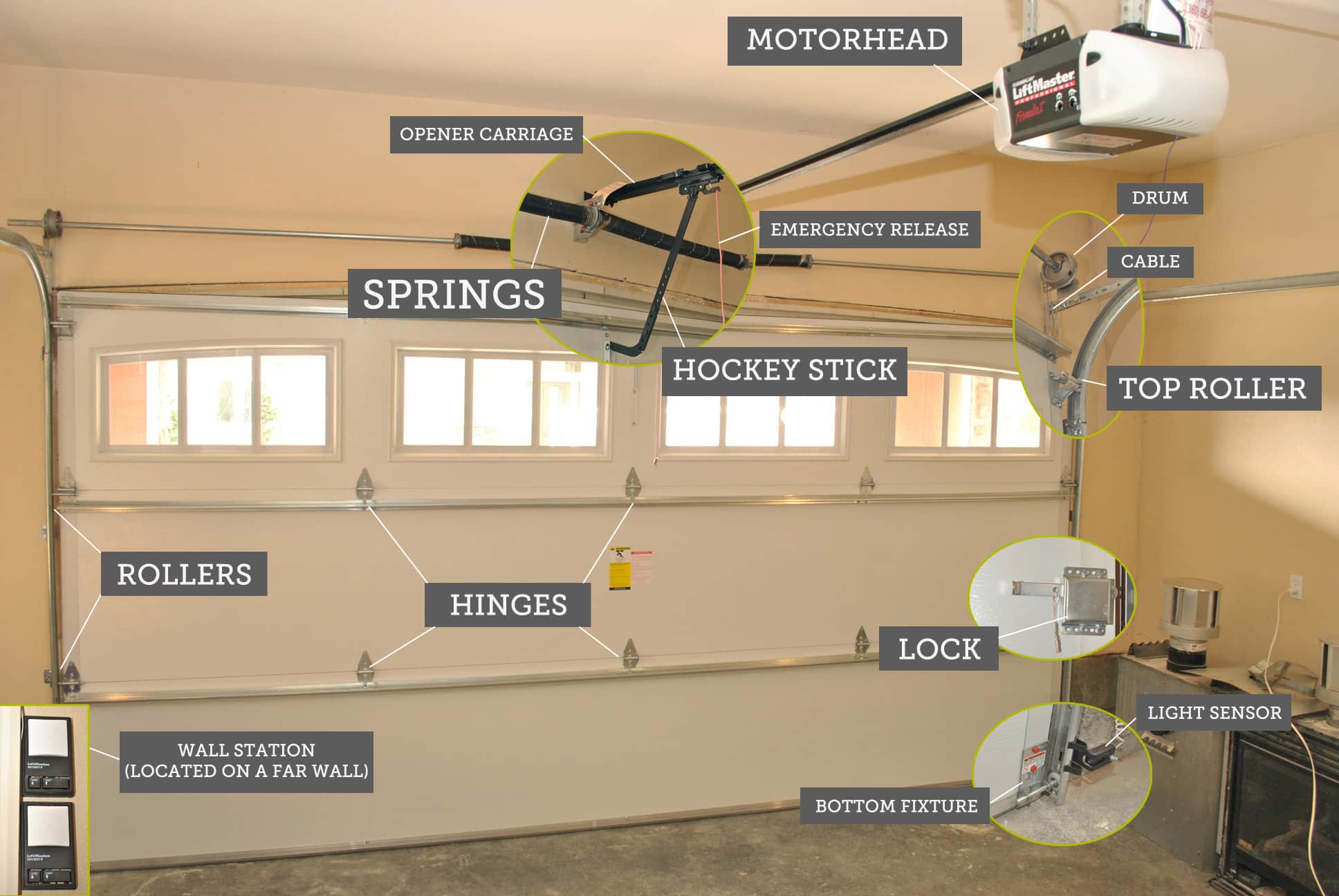
Garage door openers can malfunction in a variety of ways. Here are solutions for some of the most frequent issues that arise:
The remote won’t activate – Replace the remote battery. Reprogram the remote by holding the “learn” button until the opener light flashes, then press the remote button.
The opener hums, but the door doesn’t move – Lubricate door hinges and rollers. Inspect gear and sprocket. Check chain tension—test motor capacitor.
The door reverses for no reason – Adjust sensitivity and force settings. Inspect safety eyes and realign if needed. Make sure nothing is obstructing the door path.
The opener light bulb doesn’t work – Replace the light bulb with an equivalent watt bulb. Check the wiring connections at the bulb and the motor unit.
FAQs
FAQ: Why does my garage door reverse open again after closing?
This is usually due to the safety sensors being obstructed or misaligned. Check that nothing is blocking the sensors, then carefully realign them. The beams should be uninterrupted to allow full door closure.
FAQ: Why is my garage door making a loud grinding noise?
Grinding noises typically come from dry rollers or hinges that need lubrication. It can also signal worn or damaged gears that may need replacement if lubricating doesn’t quiet the noise.
FAQ: Why does the garage door opener struggle to lift the door?
If the opener is straining, the door may be unbalanced and need spring tension adjustment. Worn cables, pulleys, and rollers can also contribute to lifting difficulties. Have a professional inspect and tune up the springs and hardware.
FAQ: How do I get a new remote to work with my older garage door opener?
Start by locating the “learn” button on the motor unit to activate the programming mode. Hold it down until the indicator light flashes. Then, hold down your desired button on the new remote until the motor light flashes again, signaling it’s programmed.
FAQ: Why does my garage door shake and vibrate when opening/closing?
Vibration can be caused by improper installation where the opener isn’t level or securely mounted. Adding rubber isolator mounts can help. Check rollers, hinges, and springs for sources of resistance, making it shake.
In Summary
Standard garage door opener issues like remotes not working, doors reversing, grinding noises, and shaking can often be resolved with DIY troubleshooting for garage door opener not working and maintenance.
To manually open a garage door, ensure safety by first addressing potential issues such as realigning safety sensors, tightening hardware, or lubricating rollers as necessary.
More complex issues like motor problems will require hiring a professional. Consistent care and tune-ups keep your opener functioning smoothly.

